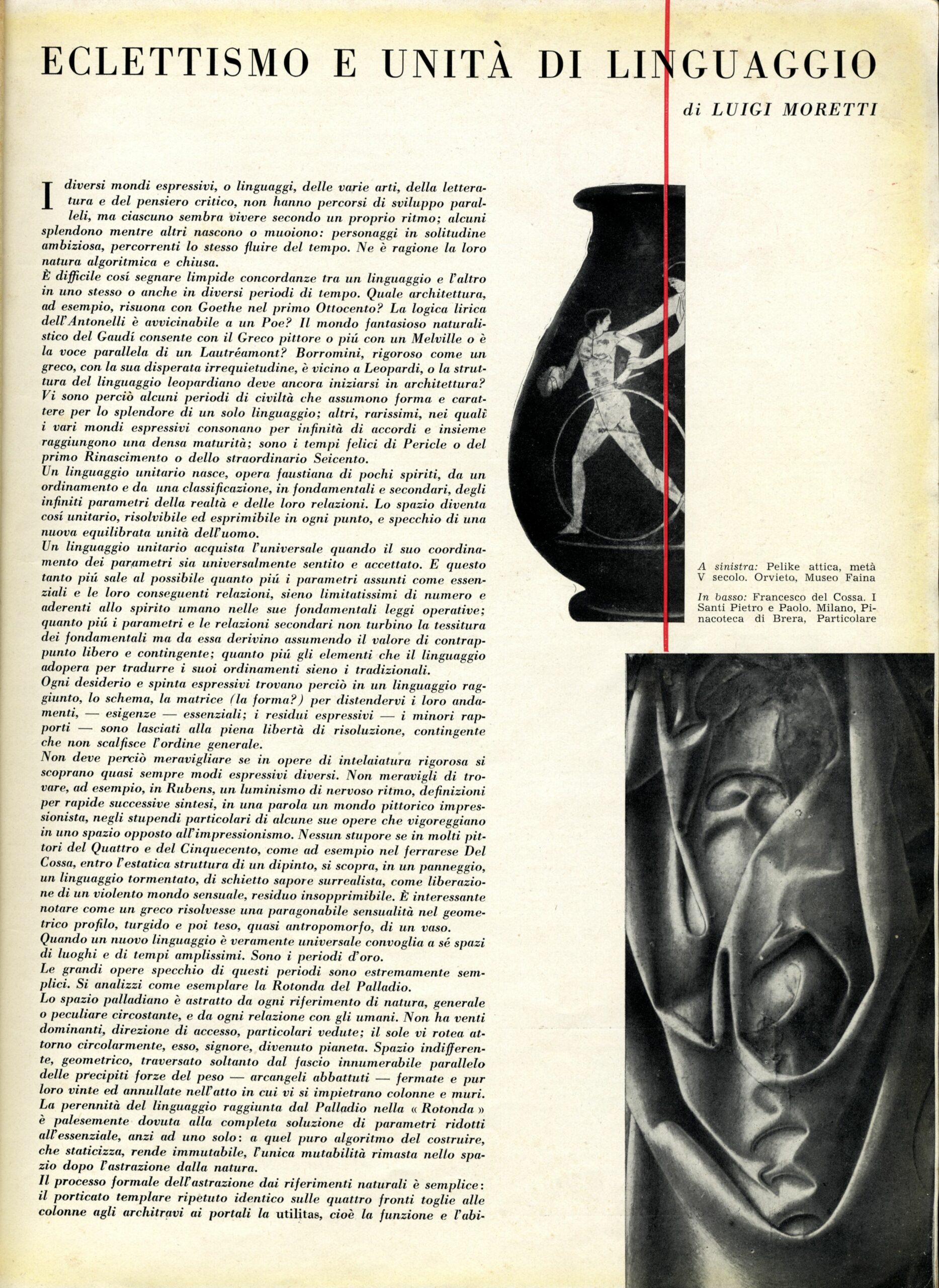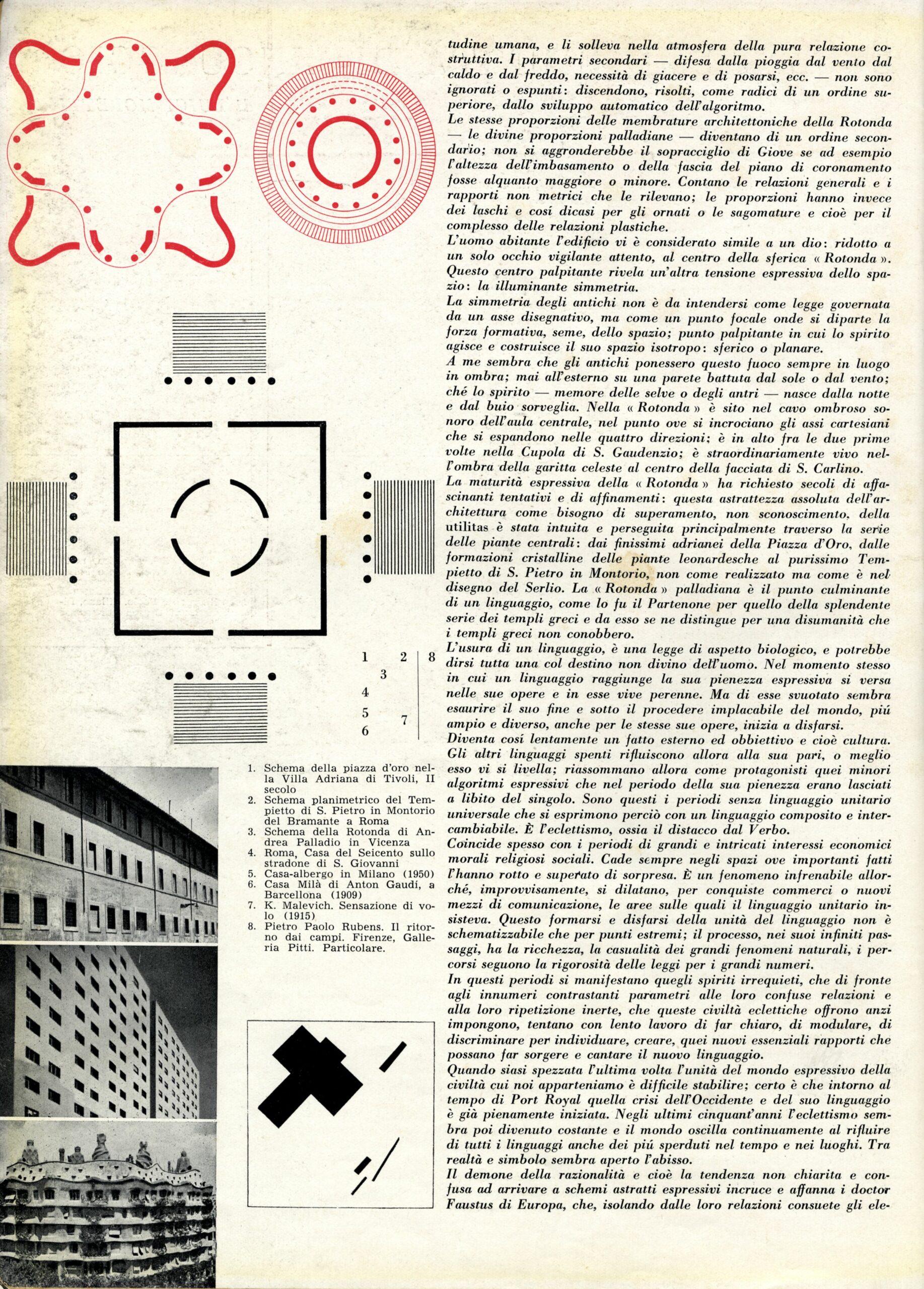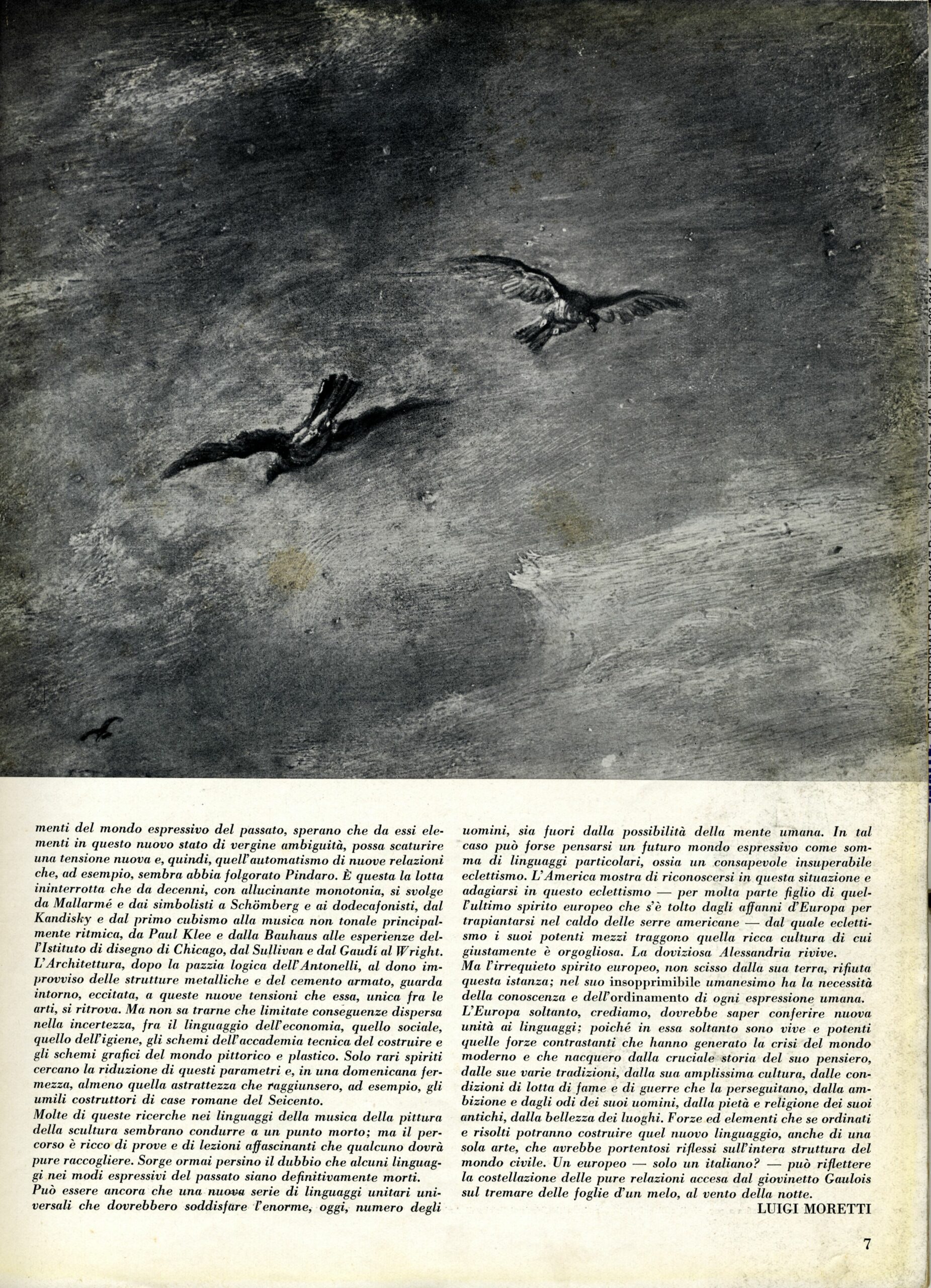Luigi Moretti and Spazio: Eclecticism and Unity of Language
In the newfound spirit that emerged at the end of the Second World War, Rome became the epicentre of a cultural renaissance. In a context marked by the dynamic interplay between the innovative language of the modern avant-garde and the city’s artistic heritage, Luigi Moretti emerged as a key figure in the Italian cultural landscape, one of its brightest interpreters. Born one year before the publication of Marinetti’s Manifesto of Futurism, Moretti absorbed the futurists’ conviction in the ‘magnificent and progressive fate’ of modernity, while also aligning with their support for the fascist regime.[1]
Besides these cultural and ideological affiliations, Moretti’s intellect reflected the profile of a nineteenth-century polymath, a mixture of positivistic idealism and passion for the opportunities offered by the new technologies. He paired creativity with methodological rigour, rooting his knowledge in the humanistic tradition and drawing inspiration from the late Renaissance and the Baroque. He cultivated a sensibility for science and mathematics,[2] which he considered the field of ‘purest contemplations’ and ‘applicative wonders’,[3] while art was ‘to make humans rise (..) to a sort of vivid bewilderment’.[4]
After the war, having disappeared from public life and spending time in prison, Moretti entered a period of intellectual and professional maturity. His theoretical oeuvre is largely captured in the texts collected in Spazio, the magazine he founded, edited, and designed, and where he published some of his sharpest reflections on architecture and the other arts. His writing is rich and evocative, at times cryptic and often leans towards the esoteric. Moretti did not simply seek to anchor modernity to the glories of the past; he engaged in a dialogue with the spirit of his predecessors, taking on the responsibility of uncovering the unitary language common to all human expressions.
Marco Vanucci and Drawing Matter revisit three seminal texts of Luigi Moretti, not generally available in translation, through three posts. This first post, translated by Christopher Huw Evans for Drawing Matter, presents Luigi Moretti’s opening article ‘Eclecticism and Unity of Language’ published in the first issue of Spazio.
In ‘Eclecticism and Unity of Language’, Moretti outlines some underlying objectives of his cultural project: the search for a unitary language. Anticipating the precepts of Bruno Zevi’s ‘critica operativa’, he reviews the ‘algorithmic’ consonance of expressive languages in the Renaissance and the Baroque period, while warning about the disjointed nature of modernity, which he describes as a period of eclecticism.



With special thanks to Archivio Moretti Magnifico.
Read the English translation of Luigi Moretti’s ‘Eclecticism and Unity of Language’ here.
Notes
- Marinetti wrote the manifesto in the autumn of 1908 and it first appeared as a preface to a volume of his poems, published in Milan in January 1909. It was published in the Italian newspaper Gazzetta dell’Emilia in Bologna on 5 February 1909, then in French as Manifeste du futurisme (Manifesto of Futurism) in the newspaper Le Figaro on 20 February 1909. Luigi Moretti was born in Rome on the 2nd of January 1907.
- ‘To develop a complete mind: Study the science of art; Study the art of science. Learn how to see. Realize that everything connects to everything else’ Leonardo Da Vinci.
- Bernandino Baldi, Le vite de’ matematici, 1587-1595, cit. in F. Abbri, E. Bellone, W. Bernardi, U. Bottazzini, P. Rossi (eds), Storia della scienza moderna e contemporanea. Dalla rivoluzione scientifica all’eta’ dei lumi 1 (UET, 1989), 136.
- Luigi Moretti, ‘Forme astratte nella scultura barocca’, Spazio 3 (Ottobre 1950), 9-20 (20).
Marco Vanucci is an architect, the design director of Opensystems Architecture, and a lecturer in architectural design at London South Bank University. He also taught at the AA and was a visiting lecturer at KTH Stockholm. His research focuses on the origin of parametric, associative design methods and, lately, on the relationship between architecture and AI.
